How Chatbots Transform Customer Experience in eCommerce 2025
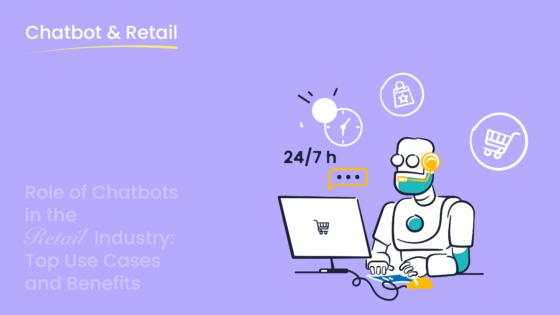
Imagine never waiting in line for customer service again. AI-powered chatbots are making that a reality for eCommerce, offering instant help and personalized interactions around the clock. By 2025, 80% of online stores are expected to use chatbots to handle customer inquiries efficiently. These digital assistants save businesses money—each interaction costs just $0.50 compared to $6.00 for human support—and boost conversion rates by up to 30%. Tools like abandoned cart chatbots even cut cart abandonment by as much as 30%, helping customers complete purchases with ease. Solutions like Sobot’s enterprise chatbot solution for eCommerce combine AI with customer insights to deliver seamless experiences that keep shoppers coming back.
Key Benefits of AI-Powered Chatbots in eCommerce
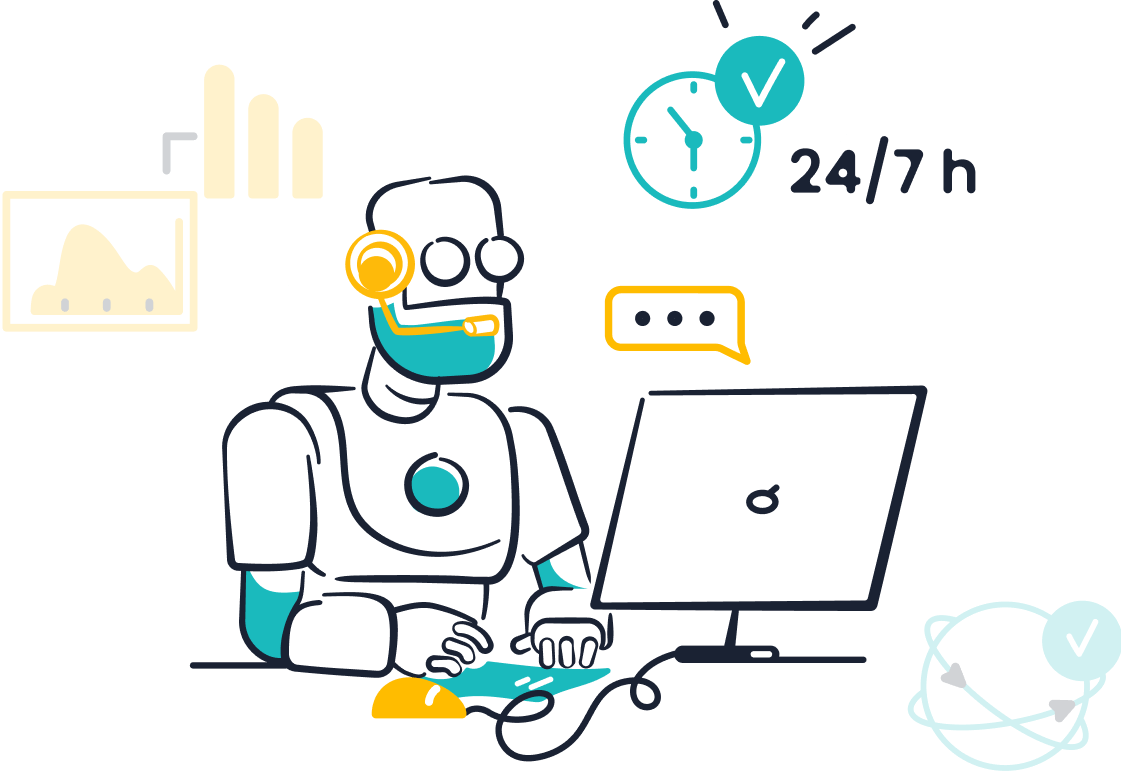
24/7 Availability for Enhanced Customer Experience
Imagine needing help with an online order late at night. Instead of waiting until morning, you get instant assistance. That’s the magic of AI-powered chatbots. These digital assistants work tirelessly around the clock, ensuring your customers always have someone to turn to. Whether it’s answering questions, resolving issues, or guiding shoppers through their journey, chatbots make sure no one feels ignored.
Here’s how 24/7 availability transforms customer experience:
| Benefit | Description | Impact on Customer Satisfaction |
|---|---|---|
| Instant Support | Customers receive immediate assistance, enhancing their experience. | Increases satisfaction levels. |
| Reduced Cart Abandonment | Chatbots send reminders for abandoned carts, addressing a major loss source. | Boosts retention and sales. |
| Increased Sales | AI-powered chatbots can lead to a nearly 20% surge in sales. | Directly correlates with satisfaction. |
| Enhanced Customer Engagement | Chatbots provide personalized interactions, strengthening brand loyalty. | Improves overall customer experience. |
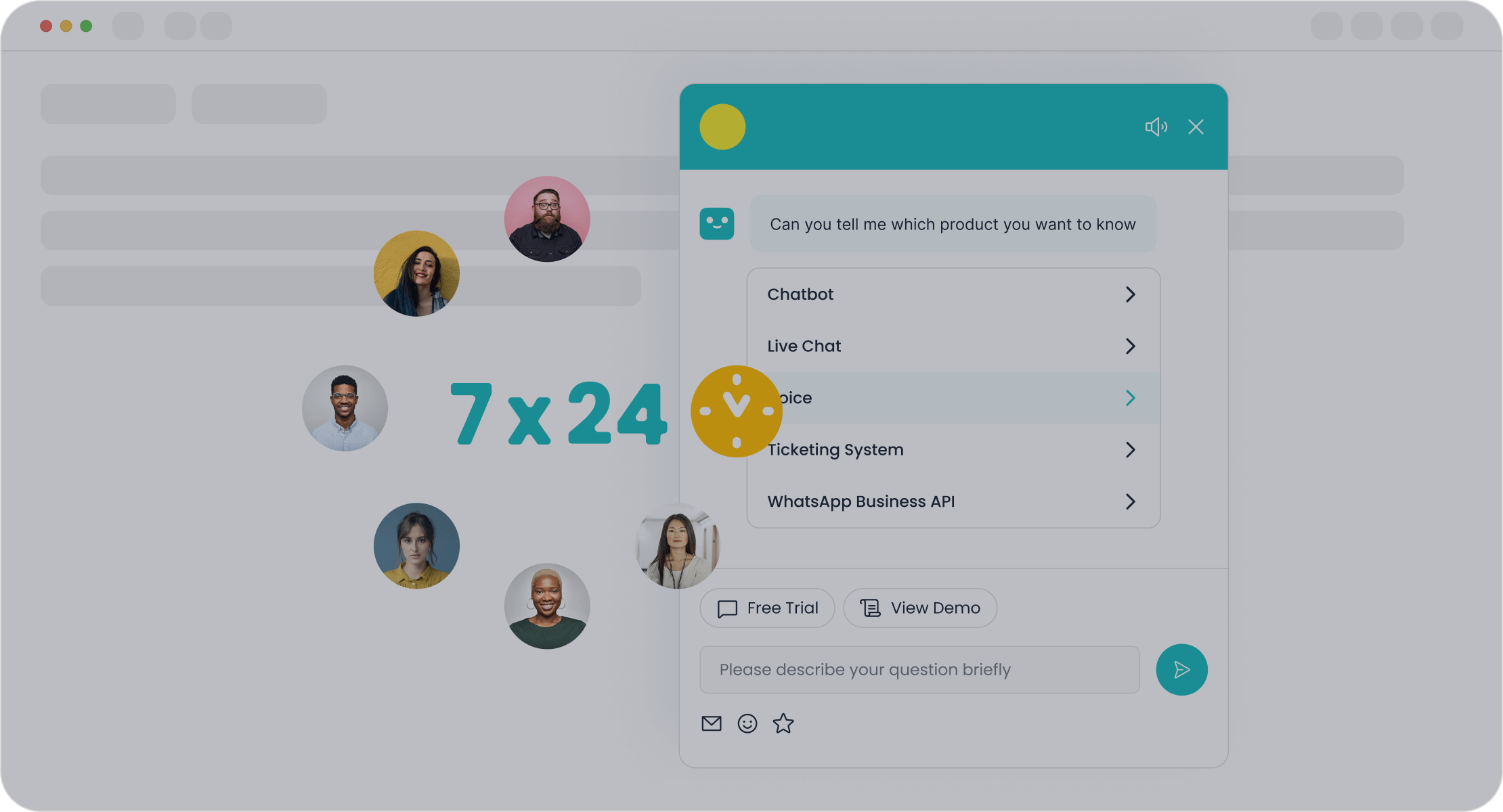
For example, Sobot’s AI chatbot operates 24/7, offering multilingual support and instant replies. It ensures your e-commerce business never misses an opportunity to engage with customers, even during peak shopping hours or holidays.
Instant Responses to Improve Customer Satisfaction
Nobody likes waiting, especially when shopping online. Chatbots eliminate delays by responding to inquiries in seconds. This speed not only improves the shopping experience but also builds trust. Did you know that 41% of customers prefer real-time support via live chat over email or phone? And 73% feel more comfortable using live chat than other channels.
AI-powered chatbots excel at delivering instant responses. They use advanced AI to understand customer intent and provide accurate answers. Brands using chatbots have reported a 12% year-over-year increase in customer satisfaction (CSAT) and a 4% growth in returning customer rates.
Sobot’s chatbot takes this a step further by integrating with CRM systems. This allows it to personalize interactions, making every response feel tailored to the individual. Whether it’s helping with product recommendations or resolving issues, instant responses keep customers happy and coming back for more.
Cost Efficiency and Scalability for Growing Businesses
Running a growing e-commerce business comes with challenges, especially when it comes to scaling customer support. Hiring and training more agents can be expensive and time-consuming. That’s where chatbots shine. They handle up to 80% of routine inquiries, reducing the need for large support teams.
Here’s a closer look at how chatbots save costs and scale efficiently:
| Evidence Type | Description |
|---|---|
| Customer Support at Scale | Chatbots enhance customer support by providing 24/7 assistance, reducing the need for large support teams. |
| Automation of Sales Processes | They automate lead generation and sales inquiries, streamlining operations and reducing costs. |
| Integration with CRM Systems | Chatbots integrate with CRM to personalize user interactions, improving customer satisfaction and retention. |
| Cost Reduction | AI technologies significantly lower customer service costs by being more efficient and available. |
| Sales Boost | Enhanced product recommendations through AI lead to a 59% increase in sales. |
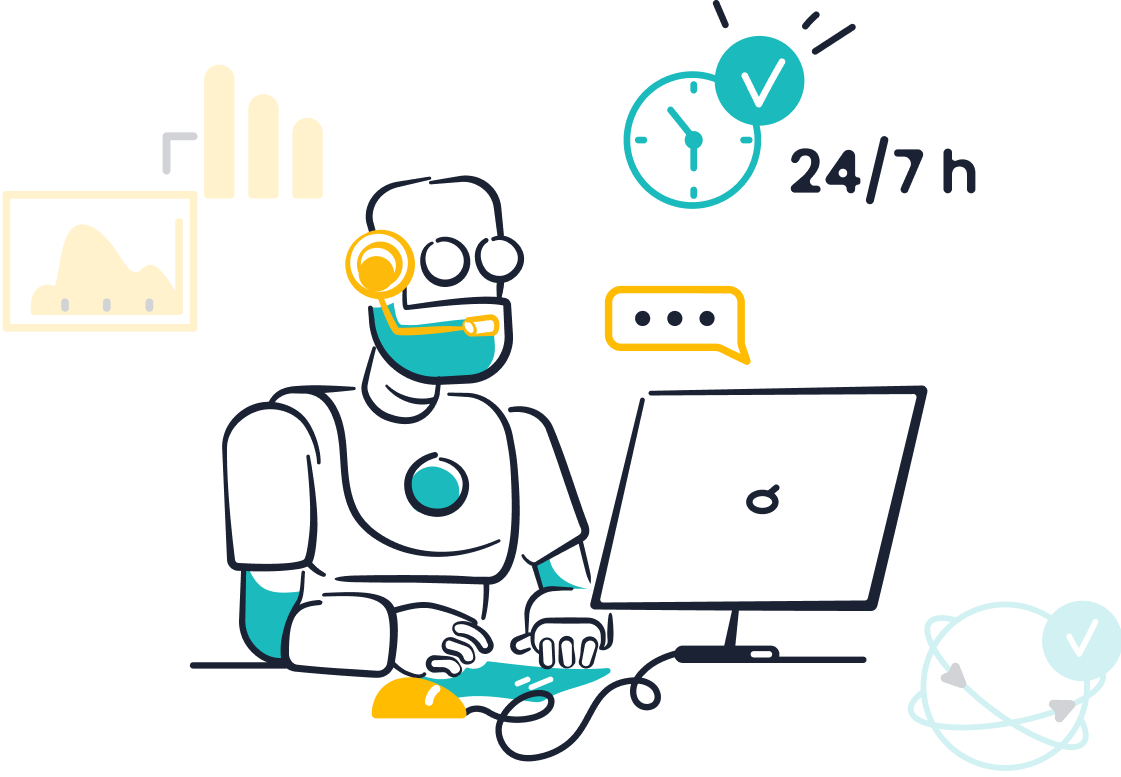
Gartner estimates that chatbots can reduce operational customer service costs by up to 30%. Juniper Research predicts $11 billion in annual savings across industries due to chatbot adoption. Sobot’s AI chatbot is a perfect example. It automates repetitive tasks, saving businesses up to 50% on agent costs while boosting productivity by 70%.
Personalized Interactions Through Data-Driven Insights
Have you ever felt like a brand truly understands you? That’s the power of personalization, and AI-powered chatbots are making it happen in e-commerce. By analyzing customer data, these chatbots create tailored experiences that feel less like a transaction and more like a conversation. They remember your preferences, suggest products you’ll love, and even predict what you might need next.
Here’s why this matters:
| Evidence Description | Impact on Customer Retention |
|---|---|
| Personalized shopping experiences lead to higher purchase likelihood. | Increases consumer interaction rates by 40%. |
| AI chatbots provide 24/7 personalized support. | Reduces cart abandonment rates. |
| AI in eCommerce can increase customer retention by personalized marketing. | Increases retention by 10-15%. |
| Businesses investing in AI solutions see revenue increase. | 25% increase in revenue and 40% improvement in retention. |

Imagine browsing an online store, and the chatbot suggests a product based on your past purchases. It’s like having a personal shopper who knows your style. Sobot’s AI chatbot takes this to the next level. It integrates with CRM systems to deliver hyper-personalized interactions. Whether it’s recommending a new gadget or helping you find the perfect gift, it ensures every interaction feels meaningful. This level of personalization doesn’t just improve the customer experience—it builds loyalty and keeps customers coming back.
Boosting Conversions with Proactive Engagement
Sometimes, all it takes to complete a sale is a little nudge. Chatbots excel at proactive engagement, reaching out to customers before they even ask for help. This approach not only improves the shopping experience but also drives conversions.
Here’s how proactive engagement works:
- Real-time customer support minimizes cart abandonment rates by addressing inquiries instantly.
- Immediate assistance instills confidence in potential buyers, leading to increased conversions.
- Chatbots provide personalized recommendations and quick responses, enhancing the shopping experience.
- They reduce cart abandonment by guiding customers toward completing purchases.
- Chatbots create a sense of reliability and professionalism, encouraging customer trust.
For example, if a customer leaves items in their cart, a chatbot can send a friendly reminder or offer a discount to encourage checkout. Sobot’s chatbot goes even further by using real-time intent analysis to identify when a customer might need help. It can proactively suggest solutions, answer questions, or even upsell complementary products. This kind of engagement doesn’t just boost sales—it creates a seamless shopping journey that customers appreciate.
By 2025, proactive engagement will be a standard feature in e-commerce. Businesses that adopt this strategy now will not only see higher conversion rates but also build stronger relationships with their customers. After all, a little extra effort can make a big difference.
Practical Applications of Enterprise Chatbot Solutions for eCommerce
Personalization with AI-Driven Product Recommendations
Have you ever visited an online store and felt like it knew exactly what you wanted? That’s the magic of AI-powered chatbots delivering personalized recommendations. By analyzing your browsing history, purchase patterns, and preferences, these chatbots suggest products tailored just for you. This level of personalization doesn’t just make shopping easier—it makes it enjoyable.
Here’s why personalized recommendations are a game-changer for e-commerce:
| Statistic | Description |
|---|---|
| 56% | Online shoppers are more likely to return to a site if it recommends products. |
| 26% | Personalized product recommendations can increase revenue. |
| 50% | Segmented marketing campaigns can increase conversion rates. |
| 20% | Personalization strategies can lead to an increase in sales. |
| 288% | Personalized product recommendations can increase conversion rates significantly. |
| 91% | Consumers are more likely to shop with brands that provide personalized recommendations. |

Sobot’s AI chatbot takes this to the next level. It integrates seamlessly with CRM systems to provide tailored recommendations in real time. Whether it’s suggesting a new gadget or helping you find the perfect gift, Sobot ensures every interaction feels personal. This approach not only enhances the customer experience but also builds loyalty, encouraging customers to return again and again.
Streamlining Order Management and Returns
Managing orders and returns can be a headache for any e-commerce business. But with chatbots automating customer service, this process becomes a breeze. These AI-powered tools handle routine queries, track orders, and even assist with returns—all without human intervention.
Here’s how chatbots improve order management and returns:
- They manage over 70% of incoming queries autonomously, freeing up your team for more complex tasks.
- Real-time data allows chatbots to provide personalized responses, making interactions feel human.
- They speed up order processing, ensuring customers receive their purchases on time.
- Chatbots optimize resources, letting you focus on critical areas of your business.
- Real-time order tracking and 24/7 support enhance customer satisfaction.
For example, a logistics company using chatbots saw a 40% drop in call center inquiries and a 25% boost in customer satisfaction scores. Sobot’s chatbot excels in this area by integrating with your existing systems to provide seamless order updates and returns processing. It’s like having a virtual assistant that never sleeps, ensuring your customers always get the support they need.
Proactive Customer Support with Real-Time Notifications
Imagine placing an order and receiving instant updates as it moves through each stage. That’s the power of real-time notifications powered by AI chatbots. These proactive alerts keep customers informed, reducing anxiety and improving their overall experience.
Here’s what makes real-time notifications so effective:
| Aspect | Description |
|---|---|
| Real-time updates | Chatbots provide immediate updates on order status and delivery information to customers. |
| Proactive notifications | Customers receive alerts as their order progresses through various stages, enhancing engagement. |
| Communication channels | Notifications can be sent via preferred channels like messaging platforms, SMS, or email. |
| Handling changes | Chatbots promptly inform customers of any changes to delivery schedules, ensuring they are updated. |
Sobot’s chatbot takes proactive customer support to another level. It sends real-time notifications through multiple channels, ensuring your customers stay informed no matter where they are. Whether it’s a shipping update or a delivery delay, Sobot keeps your customers in the loop, building trust and loyalty.
Multilingual Support for Global Customer Reach
Expanding your eCommerce business globally means connecting with customers who speak different languages. This is where multilingual chatbots come in. They break down language barriers, allowing you to engage with a broader audience and deliver a seamless customer experience. Imagine a shopper in Spain asking about your product in Spanish while another in Japan does the same in Japanese. With a multilingual chatbot, both customers get instant, accurate responses in their native languages.
Here’s why multilingual support is a game-changer for global eCommerce:
- Multilingual chatbots help businesses engage with customers in their native languages, building trust and loyalty.
- They ensure customers understand your offerings, which increases conversions and sales.
- Language barriers often prevent customers from completing purchases. Chatbots solve this by providing full-spectrum language assistance.
- 76% of online shoppers prefer buying products when all information is available in their native language.

Sobot’s AI-powered chatbot excels in this area. It supports multiple languages, ensuring your business can cater to customers worldwide. Whether it’s answering questions, guiding purchases, or resolving issues, Sobot’s chatbot ensures every interaction feels personal and professional. This feature is especially valuable for small and medium-sized businesses looking to expand globally without hiring large multilingual teams. By using Sobot, you can enhance your global presence while keeping costs low.
Collecting and Analyzing Feedback to Improve Services
Understanding what your customers want is key to improving your eCommerce services. Chatbots make this easier by collecting and analyzing feedback during every interaction. They don’t just answer questions—they also gather valuable insights about customer needs, preferences, and pain points.
Here’s how chatbots help you improve your services:
- They analyze the questions customers ask and categorize them into themes.
- This analysis reveals customer motivations and opinions, helping you optimize your offerings.
- Chatbots collect feedback in real time, giving you instant insights into what’s working and what’s not.
For example, if customers frequently ask about shipping times, it might indicate a need for clearer delivery information on your website. Sobot’s chatbot takes this a step further by integrating with your CRM system. It not only collects feedback but also provides detailed reports that help you identify trends and gaps in your service. This allows you to make data-driven decisions that enhance the customer experience and boost satisfaction.
By using AI-powered chatbots like Sobot’s, you can turn every customer interaction into an opportunity to learn and grow. This proactive approach doesn’t just improve your services—it also shows your customers that you value their opinions, building trust and loyalty over time.
Future Trends in Chatbot Technology for eCommerce 2025

Hyper-Personalization with Advanced AI and Machine Learning
Imagine visiting an online store where every recommendation feels like it was made just for you. That’s the power of hyper-personalization, driven by advanced AI and machine learning. By 2025, intelligent chatbots will analyze everything from your browsing habits to your purchase history to create a shopping experience tailored to your preferences.
Here’s how hyper-personalization transforms customer interactions:
- It uses demographics like age and location to suggest relevant products.
- Psychographics and behavioral data help chatbots understand your lifestyle and interests.
- Predictive analytics anticipates your needs, offering solutions before you even ask.
This level of personalization and customization doesn’t just enhance customer satisfaction—it builds loyalty. For example, businesses using hyper-personalized strategies see a 25% revenue boost and a 40% improvement in retention. Sobot’s conversational AI excels in this area, integrating seamlessly with CRM systems to deliver these tailored experiences.
Voice-Based Interactions for Seamless Communication
Talking to a chatbot feels more natural than typing, doesn’t it? Voice-based interactions are becoming a game-changer in eCommerce. By 2025, conversational AI will make voice shopping as common as browsing a website.
Here’s why voice-based interactions matter:
| Retailer | Metric Improved | Percentage Increase |
|---|---|---|
| Sephora | Average order value | 35% |
| Kroger | Customer retention | 28% |
| Walmart | Basket size for voice purchases | 23% |
Voice-enabled chatbots improve response time and make shopping faster. Imagine asking, “What’s the status of my order?” and getting an instant update. Sobot’s AI-powered chatbots already support voice interactions, helping you automate customer support while enhancing customer satisfaction.
AI-Driven Predictive Analytics for Anticipating Customer Needs
Wouldn’t it be amazing if your chatbot could predict what your customers want before they even know it? Predictive analytics makes this possible. By analyzing past behavior, AI-powered chatbots can anticipate needs and reduce churn.
Here’s how predictive analytics works:
- It identifies at-risk customers and suggests retention strategies.
- Tailored marketing messages boost conversions and loyalty.
- Personalized offers reduce churn by up to 30%.
For example, if a customer frequently abandons their cart, the chatbot can offer a discount to encourage checkout. Sobot’s conversational AI uses predictive analytics to improve response time and create a seamless journey for your customers. This proactive approach doesn’t just enhance customer satisfaction—it keeps them coming back.
Integration with Augmented Reality for Immersive Shopping
Imagine walking into a virtual store where you can try on clothes, place furniture in your living room, or see how a gadget works—all without leaving your home. That’s the magic of augmented reality (AR) combined with AI-powered chatbots. By 2025, this technology will redefine how you shop online, making it more interactive and fun.
AR doesn’t just enhance the shopping experience; it transforms it. For instance, 61% of shoppers say they love using AR to preview products before buying. It’s not just about seeing—it’s about experiencing. Businesses that adopt AR see higher engagement, with 89% of buyers convinced to purchase after watching a product video. And when paired with chatbots, AR can answer your questions in real time, making the process seamless.
Here’s a quick look at why AR is a game-changer:
| Statistic | Details |
|---|---|
| Customer Expectations | 61% of shoppers want AR to preview products. |
| Business Adoption | Many brands use AR to make shopping more engaging and enjoyable. |
| Enhanced Conversion | 89% of buyers are convinced by product videos to make a purchase. |
| Service Improvement | 81% of shoppers expect quick service, and AR delivers on that promise. |
| Customer Demand | 65% of customers expect businesses to adapt to their needs. |
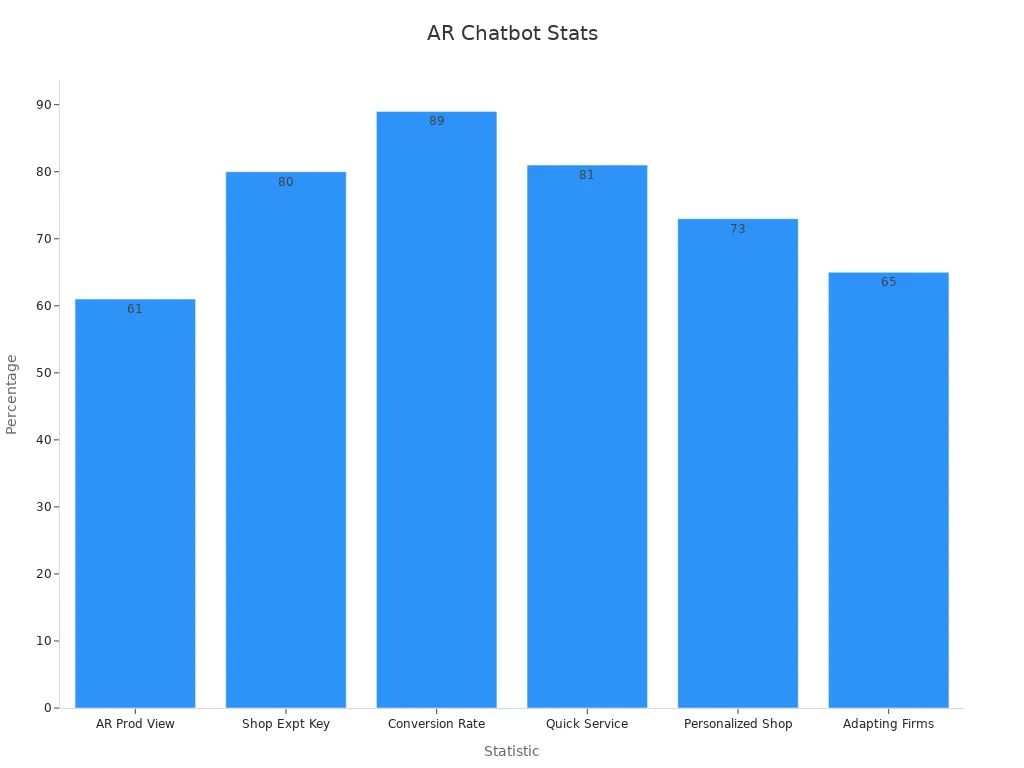
Sobot’s AI-powered chatbot takes AR integration to the next level. It helps you explore products in 3D, offers personalized recommendations, and even guides you through virtual try-ons. This combination of AR and chatbots doesn’t just improve the customer experience—it makes shopping unforgettable.
Enhanced Emotional Intelligence for Human-Like Interactions
Have you ever wished a chatbot could understand how you feel? Emotional intelligence in AI is making that possible. By 2025, chatbots will not only answer your questions but also recognize your emotions and respond empathetically. This human-like interaction builds trust and makes you feel valued.
Why does emotional intelligence matter? Customers prefer interactions that feel personal. Studies show that empathy and emotional awareness foster loyalty and satisfaction. Advanced chatbots use AI to detect tone, sentiment, and even frustration. They then adjust their responses to match your mood, creating a more meaningful connection.
Here’s how emotional intelligence enhances customer interactions:
| Source | Key Insight |
|---|---|
| Enhancing Customer Experience with AI Chatbots | Customers value entities that understand human nuances. |
| AI and Emotional Intelligence: Can Chatbots Ever Truly Understand Customers? | Empathy builds trust and loyalty. |
| Revolutionizing Customer Service: The Impact of Chatbots and AI on Customer Interactions | Emotional intelligence improves satisfaction by addressing emotions effectively. |

Sobot’s chatbot excels in this area. It uses advanced AI to analyze your tone and provide empathetic responses. Whether you’re frustrated about a delayed order or excited about a new product, Sobot’s chatbot ensures every interaction feels genuine. This isn’t just customer service—it’s a personalized experience that keeps you coming back.
How Sobot’s Chatbot Enhances Customer Experience in eCommerce
Automating Customer Interactions to Improve Efficiency
Imagine having a tool that handles repetitive questions while you focus on growing your business. That’s exactly what Sobot’s chatbot does. It automates up to 80% of routine customer inquiries, like order tracking or FAQs. This means your team can spend more time solving complex issues.
For example, if a customer asks about shipping times, the chatbot provides an instant answer. No waiting, no frustration. This automation improves productivity by 70%, saving time for both you and your customers. Plus, Sobot’s chatbot integrates with your CRM, ensuring every interaction feels personal and efficient.
Reducing Costs with 24/7 Multilingual Support
Running a global eCommerce business can be expensive, especially when you need support in multiple languages. Sobot’s AI-powered chatbots solve this problem. They operate 24/7 and handle conversations in over 50 languages. This eliminates the need for hiring large multilingual teams.
Did you know that chatbots can save businesses up to 50% on customer service costs? Sobot’s chatbot goes even further by offering real-time assistance across channels like WhatsApp and SMS. Whether it’s midnight in Tokyo or morning in New York, your customers always get the help they need.
Boosting Conversions Through Proactive Messaging
Sometimes, all it takes to close a sale is a timely message. Sobot’s chatbot excels at proactive customer engagement. It sends reminders for abandoned carts, offers discounts, and even suggests complementary products.
For instance, if a customer leaves items in their cart, the chatbot can send a friendly nudge to complete the purchase. This strategy boosts conversions by 20%. By anticipating customer needs and acting quickly, Sobot’s chatbot turns casual browsers into loyal buyers.
Easy Integration with Omnichannel Platforms
Managing multiple communication channels can feel overwhelming. Customers expect seamless support whether they’re reaching out via email, social media, or live chat. That’s where Sobot’s AI-powered chatbots shine. They integrate effortlessly with omnichannel platforms, creating a unified experience for both you and your customers.
Here’s how Sobot makes integration simple and effective:
| Feature | Description |
|---|---|
| Unified Channel View | Agents can see customers from different channels clearly represented with icons. |
| Chronological Chat Sequence | The chat sequence follows a chronological order, helping agents prioritize inquiries. |
| Focused Customer Support | Eliminates the need to switch accounts, allowing agents to concentrate on customer support. |
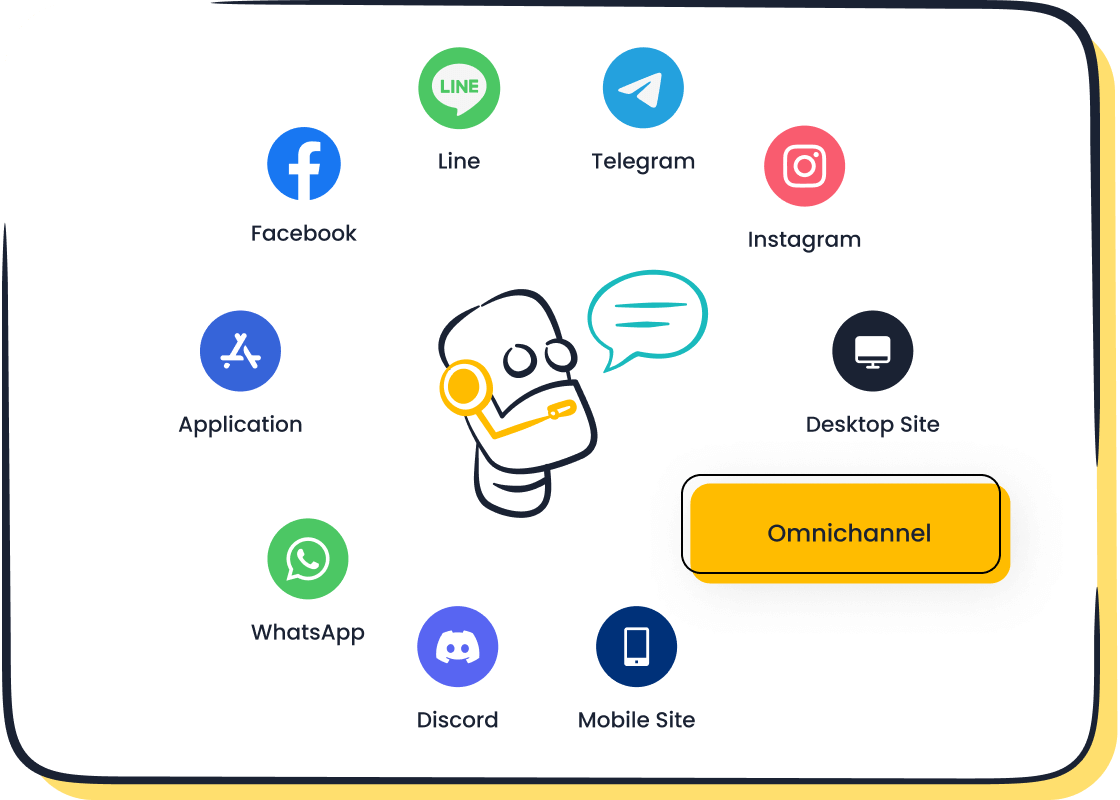
Imagine a customer reaching out on WhatsApp about an order and later following up via email. With Sobot’s chatbot, all interactions appear in one place, ensuring nothing gets missed. This streamlined approach not only saves time but also improves the overall customer experience. By integrating with platforms like WhatsApp, SMS, and social media, Sobot ensures your business stays connected with customers wherever they are.
Customizable Solutions for Unique Business Needs
Every eCommerce business is different. Your needs might not match those of another company, and that’s okay. Sobot’s AI-powered chatbots are designed with flexibility in mind, offering customizable solutions that adapt to your unique requirements.
Here’s why customization matters:
- Custom AI chatbots enhance customer engagement and automate repetitive tasks, making them essential for your business.
- Tailored chatbots meet specific organizational needs, offering flexibility and scalability that generic options lack.
- Personalized solutions improve customer interactions and operational efficiency, proving their value in diverse eCommerce environments.
For example, if your business focuses on luxury goods, Sobot’s chatbot can be customized to provide a high-touch experience, offering detailed product descriptions and personalized recommendations. On the other hand, if you run a high-volume retail store, the chatbot can prioritize speed and efficiency, handling thousands of inquiries simultaneously. This adaptability ensures your customers always receive the best possible experience, no matter your industry or scale.
Steps to Implement an Enterprise Chatbot Solution for eCommerce
Identifying Key Customer Pain Points
Before you dive into implementing an enterprise chatbot solution for eCommerce, it’s crucial to understand your customers’ biggest frustrations. What’s slowing them down? What’s making them leave your site without completing a purchase? Identifying these pain points helps you design a chatbot that truly improves the customer experience.
Here’s a quick look at common customer pain points and how chatbots can solve them:
| Customer Pain Point | Example Solution |
|---|---|
| Unresponsive support team | Use chatbots to manage conversations and direct customers to solutions without needing support team intervention. |
| Steep learning curve | Create reference materials like demos or templates to help customers quickly understand the product. |
| Redundant processes | Review processes to eliminate unnecessary steps, improving efficiency and customer satisfaction. |
For example, if customers often complain about long wait times, an AI-powered chatbot like Sobot’s can step in to provide instant responses. It operates 24/7, ensuring no query goes unanswered. By addressing these pain points, you’ll not only improve customer satisfaction but also build trust and loyalty.
Choosing the Right Chatbot Platform
Not all chatbots are created equal. Choosing the right platform is key to ensuring your enterprise chatbot solution for eCommerce meets your business goals. But how do you decide? Focus on performance metrics that matter most to your business.
Here are some criteria to consider:
- Conversion Rates: How many chatbot interactions lead to a sale?
- Customer Satisfaction: Are customers happy with their chatbot experience?
- First Contact Resolution: Can the chatbot resolve issues without human intervention?
- Cost Savings: How much does the chatbot save compared to traditional support methods?
- Accuracy Rate: Does the chatbot provide correct answers consistently?
Sobot’s AI-powered chatbots excel in all these areas. They integrate seamlessly with omnichannel platforms, ensuring a smooth experience for your customers. Plus, they’re customizable, so you can tailor them to your unique needs.
Training Chatbots with Relevant Data
A chatbot is only as good as the data it’s trained on. To make your chatbot effective, you need high-quality, diverse datasets that cover all possible customer queries. This ensures your chatbot can handle a wide range of scenarios.
| Evidence Description | Importance |
|---|---|
| High-quality datasets provide real-world, diverse, and task-oriented examples. | They enable chatbots to handle a wide range of user queries effectively. |
| Data should represent all topics the chatbot will cover. | This ensures the chatbot can respond to the maximum number of user requests. |
| Defining different intents and training samples is crucial. | It helps in training the chatbot model effectively with relevant data. |

For instance, Sobot’s AI chatbot uses a knowledge base built from articles, PDFs, and other resources to provide accurate, instant replies. It’s like giving your chatbot a library of answers, ensuring it’s always ready to help. By investing in quality data, you’ll create a chatbot that not only answers questions but also enhances the overall customer experience.
Monitoring and Optimizing Chatbot Performance
Once your chatbot is up and running, the real work begins—monitoring and optimizing its performance. This step ensures your chatbot delivers the best possible customer experience while meeting your business goals. But how do you know if your chatbot is performing well? By tracking key metrics that reveal its effectiveness.
Here’s a quick look at the essential performance analytics you should monitor:
| Metric | Description |
|---|---|
| Total interactions | The total number of messages exchanged between users and the chatbot, indicating engagement levels. |
| Average chat duration | The average time users spend interacting with the chatbot, reflecting engagement and efficiency. |
| Goal Completion Rate (GCR) | Measures how effectively the chatbot fulfills its intended purpose, such as answering queries. |
| Customer Satisfaction Score | Direct feedback from users post-interaction, crucial for assessing user satisfaction and effectiveness. |
| Conversion rate | Tracks how well the chatbot drives user actions that benefit the business, like completing purchases. |
| Human takeover rate | Indicates how often the chatbot escalates issues to human agents, reflecting its effectiveness. |
For example, if your chatbot has a high human takeover rate, it might need better training or more data to handle complex queries. On the other hand, a strong Goal Completion Rate shows that your chatbot is meeting customer needs effectively. Tools like Sobot’s AI-powered chatbots make this process easier by offering detailed analytics and reporting. These insights help you identify areas for improvement and fine-tune your chatbot for maximum efficiency.
Regularly reviewing these metrics ensures your chatbot stays aligned with your business objectives. It also helps you adapt to changing customer expectations, keeping your AI-powered chatbots relevant and effective.
Integrating Chatbots with Existing Customer Support Systems
Your chatbot doesn’t have to work alone. Integrating it with your existing customer support systems creates a seamless experience for both your team and your customers. This integration allows your chatbot to access customer data, provide personalized responses, and escalate issues to human agents when necessary.
Here’s why integration matters:
- Unified Customer Data: When your chatbot connects with your CRM, it can pull up customer history instantly. This makes interactions more personal and efficient.
- Streamlined Workflows: Integrated chatbots can assign tickets, update records, and even notify agents about unresolved issues.
- Improved Team Collaboration: Your chatbot and support team can work together, ensuring customers get the help they need without delays.
For instance, Sobot’s AI-powered chatbots integrate effortlessly with omnichannel platforms like WhatsApp and SMS. Imagine a customer reaching out on social media and later following up via email. With Sobot, all these interactions appear in one unified view, so nothing gets missed. This not only saves time but also enhances the overall customer experience.
By integrating your chatbot with existing systems, you create a support ecosystem that’s efficient, responsive, and customer-focused. It’s a win-win for everyone involved.
AI-powered chatbots are reshaping how you shop online. They deliver instant help, personalized recommendations, and efficient support that make every customer experience smoother. By 2025, these tools will become even smarter, predicting what you need and offering solutions before you ask. Businesses that embrace this technology now will stay ahead of the curve. Solutions like Sobot’s Chatbot already provide 24/7 multilingual support and proactive engagement, helping you connect with customers worldwide. Don’t wait—start transforming your eCommerce experience today.
FAQ
What are the main benefits of using chatbots in eCommerce?
Chatbots improve customer experience by offering 24/7 support, instant responses, and personalized recommendations. They reduce costs by automating repetitive tasks and boost sales through proactive engagement. For example, Sobot’s AI-powered chatbot increases conversions by 20% and saves up to 50% on support costs.
Can chatbots handle complex customer queries?
Yes, modern AI-powered chatbots, like Sobot’s, use advanced machine learning to understand complex queries. They escalate unresolved issues to human agents when needed, ensuring customers always get accurate answers. This hybrid approach improves resolution rates and customer satisfaction.
How do chatbots enhance global customer reach?
Multilingual chatbots break language barriers, enabling businesses to connect with customers worldwide. Sobot’s chatbot supports over 50 languages, ensuring seamless communication. For instance, it can assist a shopper in Spanish while simultaneously helping another in Japanese, all in real time.
Are chatbots expensive to implement?
Not at all! Chatbots save money in the long run by reducing the need for large support teams. Sobot’s chatbot, for example, operates 24/7 and handles up to 80% of routine inquiries, cutting costs by up to 50%. Plus, its no-code setup makes implementation quick and affordable.
How do chatbots improve customer loyalty?
Chatbots create personalized experiences by analyzing customer data and offering tailored recommendations. Sobot’s chatbot integrates with CRM systems to remember preferences and predict needs. This level of personalization builds trust and keeps customers coming back, boosting retention by up to 15%.
See Also
Enhancing Customer Satisfaction Through E-commerce Chatbots
Increasing Sales With E-commerce Live Chat Solutions
Best Live Chat Tools for E-commerce This Year